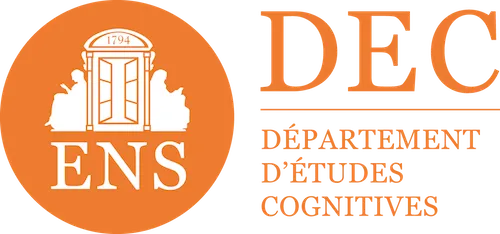

Everything you need to know about interactive training
The digitalization of training has opened the way for new pedagogical modalities, among which interactive training occupies a central place. In companies as well as within training organizations, this approach makes it possible to actively involve participants while promoting sustainable learning adapted to the needs of the field.
Thanks to tools like the Didask training platform and its innovations such as AI assistant, the authoring tool or even adaptive learning, training actors now have powerful means to design tailor-made, dynamic and truly engaging educational experiences.
Discover what interactive training is, its advantages, its characteristics, as well as the concrete solutions offered by Didask for transform your training paths.
What is interactive training?
Interactive training refers to a teaching method where The learner plays an active role in his apprenticeship. Unlike passive courses (such as video lectures), it is based on constant interaction : answers to quizzes, scenarios, educational games, interactions between participants or even rich multimedia content (infographics, interactive videos, live polls...).
In a professional context, this means that employees are not content with consuming courses, butthey act, think, experiment and train in digital environments close to their daily lives, thus strengthening the transferability of skills and the relevance of training.
The essential pillars of effective interactive training
Effective interactive training is based on several fundamental pillars that transform learning into an engaging experience and memorable.
- Varied multimedia content: to capture the attention of learners and adapt to different cognitive styles, the training must offer a rich mix of explanatory videos, dynamic infographics, interactive simulations and concise articles. This diversity makes it possible to contextualize knowledge and to promote its understanding.
- Engaging activities: interactivity is based on action. Multiple choice quizzes, concrete case studies, serious games, real-time surveys... These formats encourage participants to think, decide and interact.
- Personalized courses: thanks to the Adaptive learning, each learner follows a path that corresponds to his level and needs. Adjusting the pace and courses reinforces educational effectiveness and avoids the “gas factory” effect of linear courses.
- Immediate feedback: the instant correction of an answer, accompanied by clear pedagogical feedback, allows the learner to understand his mistakes, to correct them and to progress without frustration. This mechanism reinforces the anchoring of knowledge.
- An educational scenario: the training must follow a logical progression, designed to maintain commitment and support the development of skills. Good screenwriting intelligently combines theory, practice, and revision.
By combining these elements, interactive training becomes a powerful lever for permanently involving employees and maximizing educational impact.
The concrete benefits of interaction in training
Integrating interaction into a training course is not limited to making the modules more attractive: it profoundly transform the learning experience. By stimulating engagement, promoting active participation and adapting content to the needs of learners, interactive training meets key challenges for companies and training organizations.
Here are the main concrete benefits it can bring to your educational systems:
Strengthen learners' attention and involvement
One of the great advantages of interactive training lies in its ability to engaging learners. Thanks to varied content and regular interactions, the attention rate increases significantly. No more videos watched in the background! Every action, every response, every interaction counts and keeps the learner focused.
Use fun levers to boost learning
Whether it's gamification, interactive modules or instructive games, interactive training makesmore enjoyable and stimulating learning. This makes it possible to desecrate certain complex themes while strengthening motivation.
Creating engaging collaborative experiences
Trainers and learners can interact through forums, virtual classrooms, or group work. This collective dynamic promotes collaborative intelligence and the co-construction of knowledge.
Boost memory with targeted activities
Active engagement of learners Promotes memorization. Situations, refresher quizzes or practical exercises allow you to mobilize your knowledge in a realistic context. Memory anchoring is thereby strengthened.
Encouraging independence through active learning
Through interactive courses and practical cases, learners are invited to reflect, test, correct, and start again. This active learning logic is much more effective than simply reading a course.
Analyzing results to manage progress
Thanks to a LMS tool like Didask, learning data is centralized. It becomes possible to follow the skills acquired, the blocking points and to propose targeted remedies via the AI assistant. The evaluation becomes a A real driver of progress.
Design an interactive step-by-step training
Creating interactive training may seem complex, but with the right tools, it's easy, even for teams without advanced technical expertise. The secret lies in a clear methodology and the use of solutions designed to simplify each step.
Here are the main steps to follow:
- Define goals: precisely identify the skills to be developed to meet the business or operational challenges of your learners.
- Script: structure your training as a logical progression. Alternate phases of theoretical contributions, practices and evaluations to promote active learning.
- Create content: design various supports (videos, quizzes, articles, interactive exercises) to meet different cognitive profiles.
- Add interaction: energize the whole thing with open questions, multiple choices, scenarios or even tools to involve your groups directly.
- Test and adjust: Submit your training to a panel of users and analyze their feedback to continuously improve the experience.
With the software tool author by Didask, each step is smooth and intuitive. It allows interactive modules to be built in a guided manner, based on proven educational principles. Even better, the educational AI integrated assists you in the structuring of content to ensure learning that is truly effective and aligned with your strategic goals.
Didask: an interactive solution at the service of businesses
At Didask, interactivity is much more than a keyword: it is a true pedagogical philosophy. Designed for businesses and training organizations, the LMS platform integrates powerful functionalities that allow transform traditional training into interactive, engaging and personalized modules.
Among the strengths of the Didask offer:
- Interactive modules rooted in reality: each content is designed to immerse the learner in a concrete professional situation, promoting immediate transposition into practice.
- One Didask training catalog already optimized for active learning, with a clear storyline and targeted goals.
- An intelligent AI assistant which offers recommendations adapted to the individual needs of each employee, stimulating autonomy along the way.
- An adaptive learning engine to automatically adjust content based on achievements and errors.
- Precise monitoring of learners' progress, accessible to trainers as well as HR, for fine management of skills in companies.
Didask is not content with digitizing training courses: the platform is renewing the approach. Thanks to the alliance between technology, pedagogy and cognitive science, it offers a digital learning experience that places interaction at the center, while ensuring concrete results for teams and training managers.
Interactive training is becoming more important than ever a key lever for developing business skills. By combining technology, pedagogy and interactivity, it meets the challenges of commitment, performance and individualization of training courses. This approach promotes active learning, stimulates learners' motivation, and facilitates the immediate application of knowledge in the field, thus creating a true culture of continuous improvement within the teams.
Thanks to its LMS platform, its innovative functionalities and its approach based on cognitive science, Didask offers a complete solution to design and deliver high-impact interactive training. Its AI assistant customizes recommendations, while adaptive learning adjusts the level of difficulty for each participant in real time. Combined, the author tool intuitive and Didask's training catalog allow you to quickly deploy tailor-made modules, aligned with the strategic goals of your organization.
Whether you are a training organization Or a venture, you thus have the means to transform your educational offerings And of offer your employees modern, effective, motivating and sustainable learning experiences.
Make an appointment directly with our eLearning experts for a demo or simply more information.












